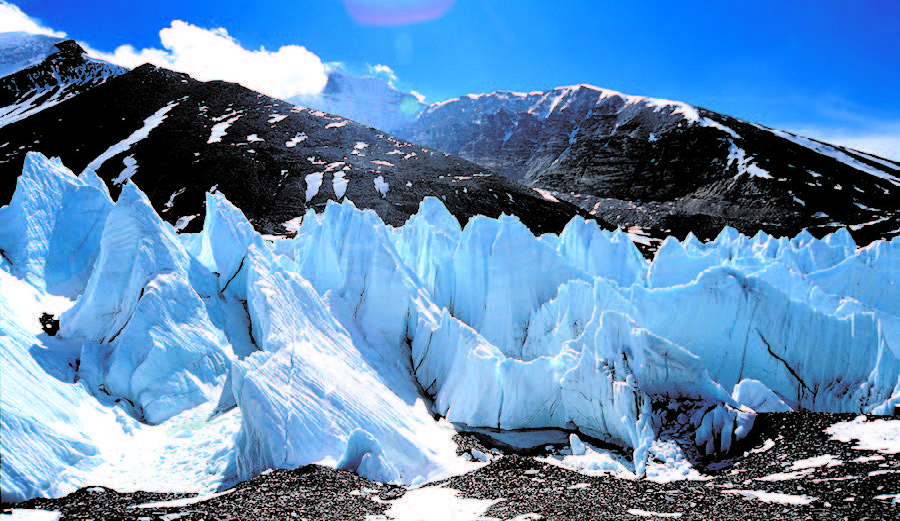
BEIJING (TIP): Glaciers on Mount Everest, source of major Asian rivers like Brahmaputra, have shrunk by 28%over the past 40 years due to climate change, according to a report.
The glacial shrinkage area is compared to the measurements taken in the 1970s in the report released by the Chinese Academy of Sciences (CAS), Hunan University of Science and Technology , and Mount Qomolangma Snow Leopard Conservation Centre.
The glacial area on the south slope of the world’s highest mountain, in Nepal, has decreased by 26% since the 1980s, the report said.
Part of the report also said Everest, known as Mount Qomolangma in Tibet, has been getting warmer for the past 50 years.
Kang Shichang, a researcher with the State Key Labo ratory of Cryospheric Sciences under the CAS, said the data was based on long-term remote sensing and on-site monitoring.
At present, there are 1,476 glaciers in China‘s Mt Qomolangma national nature reserve, covering 2,030 square kilometres, state-run Xinhua news agency reported. The shrinking glaciers have resulted in swelling of glacial lakes and higher river levels downstream, Kang, who has led several glacier inspection teams, said.
Remote sensing data showed that the area of a glacial lake in Mount Everest nature reserve increased from about 100 square kilometres in 1990 to 114 square kilometres in 2013, Kang said.
Mount Everest is the source of a number of major Asian rivers, including Brahmaputra and Ganges.




Be the first to comment